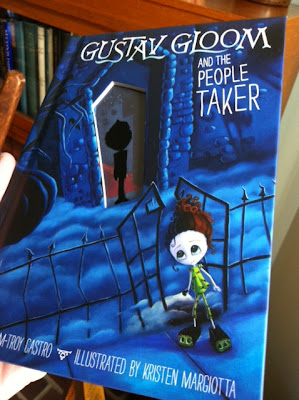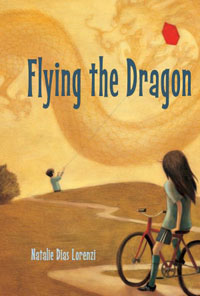 |
| Lea Nolan |
Lea writes the kinds of stories she sought as a teen—smart paranormals with bright heroines, crazy-hot heroes, diabolical plot twists, plus a dose of magic, a draft of romance, and a sprinkle of history. She has degrees in history and public policy, and spent 15 years as a health policy analyst and researcher. To learn more about Lea and her work, visit her website, Facebook, Twitter or Goodreads. (And leave a comment below to enter to win an e-copy of CONJURE!)
Q: Lea, I'm curious how your background in history and public policy led to writing YA! Can you tell us about
your path to publishing––when you started writing, how CONJURE came into being,
and how you found your agent and publisher?
A: Ah it’s an interesting tale! The shortish answer is that I
was once a totally gung ho DC health policy think tank wonk, but then I started
having babies and my priorities shifted. It wasn’t possible (or desirable) to
work 60 hour weeks anymore so I started cutting back, first to four days a
week, then to three. I was also in a PhD program at the time and was seriously
overwhelmed, and frankly, was beginning to get burned out on policy. You see policy is one thing–you can craft and
recommend solutions to solve obvious problems—but then you come up against politics which often creates artificial
obstacles to implementing all your brilliant proposals. So I’d say I was ripe
for a career change.
And then I read Twilight. Like so many recent writers, I was
inspired by the powerful emotional feelings Stephenie Meyers conveyed in that book.
It reminded me of how earth-quaking first love can be and spurred my interest
in YA fiction. When I was a teen there was no such “genre” and I ran out of
books to read with teen characters by the time I was twelve. So after studying
a few YA books, I figured I’d try my hand at writing.
It took me two years to write my first book. Let me explain, I
didn’t take me that long to draft. Over those two years, I completely stripped
it down, changed the tense, restructured scenes, etc. In total, it was reworked
six times before it was good enough to query agents. Then I had to perfect my
query letter which was even more difficult. I can’t tell you how many embarrassingly
bad queries I sent out. But after taking a couple great query classes and
running it by some fantastic betas, I finally had one that worked. I started
getting responses from agents and request for partials and fulls. One of those
agents asked to see what else I had. Luckily, I had the first 50 pages of what
became CONJURE so I sent them off.
Forty-five minutes later she offered representation, not for that first (still
unpublished) book but for the partial. I still had to finish drafting the book
and revising it which took several more months. About three years after I’d
first started writing, we went on submission.
And that’s when things got interesting. CONJURE features a hidden 18th-century pirate treasure, demon
dogs, soul snatching, and a wicked flesh-eating curse that can only be broken
with Gullah hoodoo magic. There’s lots of action and adventure and there’s also
a sweet romance. Several editors loved the voice and concept but they didn’t
exactly know what to do with a story that had the fast-paced adventure usually
found in a middle grade book, but also a sweet YA romance between a smart,
brave heroine and a hunky hero. Thankfully Liz Pelletier of Entangled Publishing
did. “This is a middle grade/YA cross over,” she declared, a book to fit the
niche of tweens and younger teen readers who aren’t drawn to the darker/edgier/sexier
upper YAs that are on the market. And even better, since the series will get
progressively creepy and sinister as it goes on, it will grow with its readers.
It was exactly the right way to go. So we aged the characters down a little
bit, and tweaked their language a smidge but kept everything else exactly as it
was and CONJURE was born.
You asked earlier how CONJURE
came to be so I’ll tell you because it’s a funny story and it proves you can
get inspiration from anywhere. As bizarre as it sounds, the idea for CONJURE came from a Chick Fil A kids
meal bag. We’d just gone through the drive-through and my daughter was reading
the little educational factoids they print on the bags. Her little voice
floated up from the back seat. “Mommy, did you know pirates used to send
messages in a bottle?” No, as a matter of fact, I’d never heard that. As I
drove down the road I wondered, why would a pirate need to send a message in a
bottle? An answer popped into my head: Maybe his ship and crew were cursed. But
what could he have done to land in such trouble? The questions and answers
snowballed and before I knew it, I had to set aside the novel I’d been planning
to write this one instead.
Q: What has been most
helpful to you as a writer, in terms of developing your craft? (writing
workshops, books on writing, blogs/articles, critique partners... what has
helped you?)
A: All of the above! Really, I’ve learned so much from the many
online writing courses I’ve taken from RWA-affiliated chapters and Savvy
Authors, and from Q&A sessions like this one on Teen Lit Authors. I
especially found the query/log line/synopsis classes to be invaluable as well
as classes on specific topics like the Herbal Lore
and Historic Medicinal Uses of Herbs course I took with Beth Trissel, and a
Steampunk course I took from Savvy Authors taught by Beth Henderson. No matter
what you’re interested in you can find a course that’ll help you and you’ll get
great hands-on critiques from the instructors and helpful suggestions from your
fellow students. I’ve also had the great fortune of working with some
absolutely fabulous critique partners. There’s nothing better than a crit
partner who’s not afraid to tell you, in a smart, constructive way that your
hero is too stupid to live or that your heroine just violated your world
building rules. Several books have also been invaluable to learning craft
including about
The Artful Edit by Susan Bell and Save the Cat by BlakeSnyder.
I also can’t say enough about joining writer’s organizations and online
discussion groups like this one, RWA and it’s local and affiliated special
interest chapters.
Q: What do you have
planned for THE HOODOO APPRENTICE series?
A: There will be a total of three books in this series. The
second book is called ALLURE and the
third is ILLUSION. As I said
earlier, the plot thickens over the next two installments, getting darker and even
more creepy with sinister plot turns. Bwahahaha! I love that these books will
grow with their readers and hopefully will carry them along to the final series
climax.
Q: Tell us about
promotional efforts for your book, including your blog tour and the new
Entangled Teen blog.
A: It started two months before release with a fantastic cover
reveal event in which 130 bloggers and authors with blogs participated. CONJURE’s beautiful cover and blurb were
everywhere for a couple days and really helped it get some nice visibility.
About a month before release we began distributing digital ARCs to interested
bloggers in exchange for their honest reviews. In addition, my publicists at
Entangled have worked hard to put together an absolutely great blog tour with
40 sites over three weeks. Most of these are interviews with giveways but we’ve
also got reviews scheduled and a few feature posts along the way.
I’ve also created a street team called The Apprentices which is
open to anyone who’s interested in helping to spread the word about CONJURE and the rest of the books in
The Hoodoo Apprentice Series. It’s a
great way to get to know enthusiastic readers better. I thought hard about how
I’d want to set up a street team. Some street teams award points for various
tasks but that was too much for me to manage. Instead I created a Facebook group that anybody can join. I post links to blog
posts and giveaways and people can tweet or Facebook about them. Also, if
people want to distribute bookmarks or other book swag to libraries, local
schools or book clubs, I’ll send out materials for them to distribute. In
return, street team members will get access to deleted scenes from Conjure,
special sneak peeks at the other books in the series and other perks. Also,
they’ll be entered to win a special monthly giveaway just for street team
members.
I’ve also invested in a bunch of book swag like bookmarks,
posters, temporary tattoos, stickers, magnets, personalized silicone bracelets
and other stuff to send to my street team members and to give away at signings,
library events, and schools.
Group blogs are also an excellent marketing tool. I belong to
three: Honestly YA, The Naked Hero and The Entangled Teen blog. These are a great way to reach
out to readers and let them get to know a little bit about your personally. For
example, the Honestly YA blogs allow us to riff on our personal experience as
teens. I’ve shared my Monday Morning Walk of Shame experience there, my Summer
Camp Loves and lots of other embarrassing teen moments. The Entangled Teen blog
is so much fun because we chat about stuff we love (mine was fancy handbags),
writing craft, fun stuff from the web, publishing experiences, etc.
Of course I’m also on Twitter, Goodreads and have a Facebook
Author page and a dedicated Facebook Page for The Hoodoo Apprentice Series.
Whew!
Q: What is your writing
process? What is a typical day like?
A: Since I’m a mom
with youngish, school aged kids, I do most of my writing during the hours
they’re at school. That’s a little tough though because my brain doesn’t really
start popping until about 10:00 am at the earliest. But it’s a job and I’ve got
to make it work so there’s a bit of mind over matter involved.
As for rituals, I do most
of my writing in a Panera Bread Café across the table from my best friend and
fellow writer, Laura Kaye. I don’t usually write
with music, unless there’s a particularly loud fellow patron nearby chomping
away with their mouth open. That totally grosses me out, so when faced with
such an obnoxious mouth-offender, I toss on some ear buds and listen to
classical music to drown him or her out. I can’t listen to anything with lyrics
otherwise I’ll lose my concentration.
Q: What are you working
on now?
A: ALLURE! The book
tour has required a little hiatus but I’m itching to get back to it.
Thank you, Lea! Your story of hard work paying off is inspiring, and I can't wait to see how the Hoodoo Apprentice series evolves into even more creepy and sinister territory!
Win an e-copy of CONJURE! Post a comment or question below today (or on the Teen Lit Authors Yahoo list) and you'll be entered to win!
Thank you, Lea! Your story of hard work paying off is inspiring, and I can't wait to see how the Hoodoo Apprentice series evolves into even more creepy and sinister territory!
Win an e-copy of CONJURE! Post a comment or question below today (or on the Teen Lit Authors Yahoo list) and you'll be entered to win!














